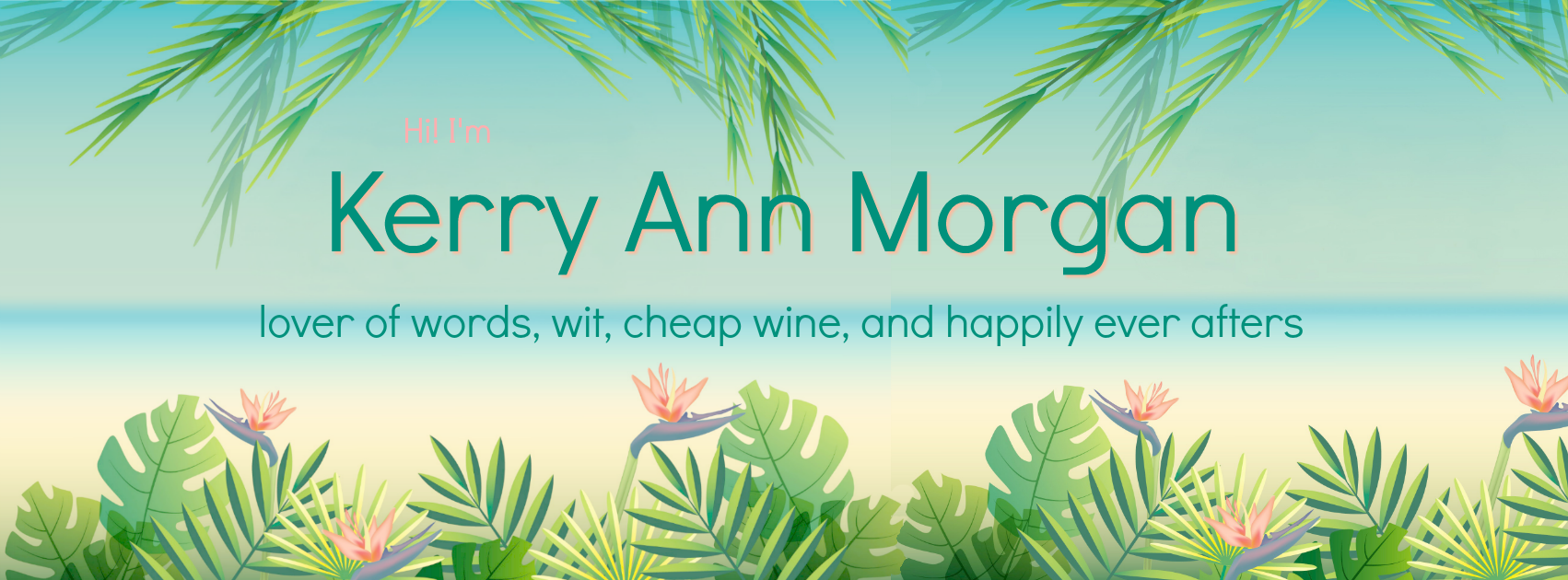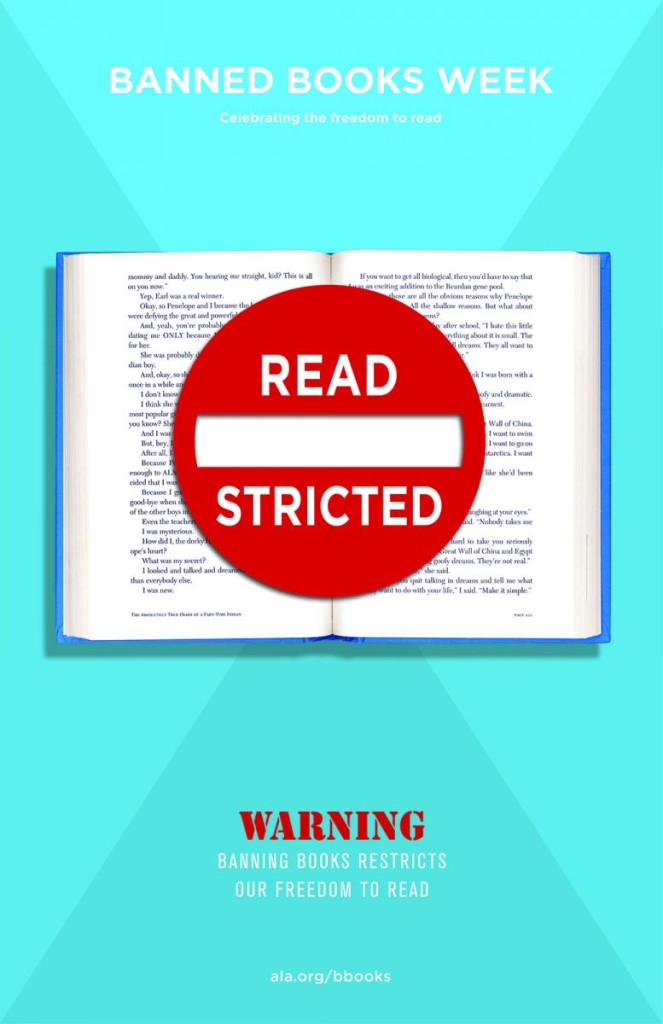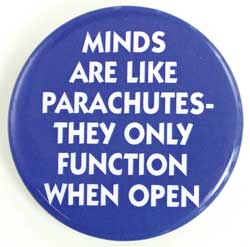Censorship is wrong. Period.
If a person doesn’t like something in a book, than THEY don’t have to read it. But they have no right to restrict another person’s access to information and ideas.
Banned Books Week (September 27−October 3, 2015) is an annual event celebrating open access to information and the freedom to read. During Banned Books Week, the entire book community— librarians, booksellers, publishers, journalists, teachers, and readers of all types—join in shared support of the freedom to seek and to express ideas, even those some may consider unorthodox or unpopular. (Those are usually the best ones!)
“Restriction of free thought and free speech is the most dangerous of all subversions.
It is the one un-American act that could most easily defeat us.”
-Supreme Court Justice William O. Douglas
We all have the freedom to choose what we read and the freedom to express our opinions even if that opinion might be considered risque, or dare I say wrong. Want to learn about history? Read about it, even the dirty little subversive parts. Schoolbooks often gloss over our “glorious” past and humans have been known to be a nasty, blood-thirsty race. Those who don’t learn about all parts of our history are doomed to repeat it. (Sorry, I’ll get down off my pulpit. Oh, wait, I have the freedom of speech and this is my blog, so I can write whatever I want.)
Banned Books Week often makes me think of a button I pinned to my backpack in college days:
So why do people “challenge” books, and try to keep others from reading them? Often challenges are motivated by a “desire to protect children from “inappropriate” sexual content or “offensive” language”. Sorry, but as a parent, you can decide what your kids read, but not mine.
According to the Office of Intellectual Freedom, the top three reasons reported for challenging books:
- the material was considered to be “sexually explicit”
- the material contained “offensive language”
- the materials was “unsuited to any age group”
By whose standards and authority?
Certainly not the First Amendment.
“If there is a bedrock principle underlying the First Amendment,
it is that the government may not prohibit the expression of an idea simply
because society finds the idea itself offensive or disagreeable.”
-Supreme Court Justice William J. Brennan, Jr., Texas v. Johnson
Below is the ALA’s list of the top ten challenged books last year. It’s a bizarre mix of children’s picture books, graphic novels, and powerful novels that will make you laugh, cry, and, heaven forbid, THINK.
And you know what I find pee-in-your-pants funny? None of the graphic and sexually explicit best-sellers of the last few years (hello Fifty Shades!) are on the list. Ahem. I guess if you’re reading it under the covers, it’s okay, bondage and all. No double-standards around here.
Anyway, check these horribly inappropriate books your library. Buy them at your local bookstore or even Amazon. Tell those closed-minded tight-asses that they will not take away your rights just because a passage in a book may conflict their beliefs.
READ BANNED BOOKS
The top ten challenged books for 2014:

The Absolutely True Diary of a Part-Time Indian
, by Sherman Alexie
Heartbreaking, funny, and beautifully written, this book chronicles the contemporary adolescence of one Native American boy as he attempts to break away from the life he was destined to live. Reasons: anti-family, cultural insensitivity, drugs/alcohol/smoking, gambling, offensive language, sex education, sexually explicit, unsuited for age group, violence. Additional reasons: “depictions of bullying”
2) Persepolis: The Story of a Childhood
, by Marjane Satrapi
Wise, funny, and heartbreaking, Persepolis is Marjane Satrapi’s powerful memoir of growing up in Iran during the Islamic Revolution. Reasons: gambling, offensive language, political viewpoint. Additional reasons: “politically, racially, and socially offensive,” “graphic depictions #1 Best Seller n Literary Graphic Novels
3) And Tango Makes Three
, Justin Richardson and Peter Parnell
The heartwarming true story of two penguins who create a nontraditional family. (Narrated by award-winning actor Neil Patrick Harris in this book and CD package!) Reasons: Anti-family, homosexuality, political viewpoint, religious viewpoint, unsuited for age group. Additional reasons: “promotes the homosexual agenda”

, by Toni Morrison
A powerful examination of our obsession with beauty and conformity, Toni Morrison’s virtuosic first novel asks powerful questions about race, class, and gender with the subtlety and grace that have always characterized her writing. Reasons: Sexually explicit, unsuited for age group. Additional reasons: “contains controversial issues”
5) It’s Perfectly Normal: Changing Bodies, Growing Up, Sex, and Sexual Health
, by Robie Harris
For two decades, this universally acclaimed book on sexuality has been the most trusted and accessible resource for kids, parents, teachers, librarians, and anyone else who cares about the well-being of tweens and teens. Reasons: Nudity, sex education, sexually explicit, unsuited to age group. Additional reasons: “alleges it child pornography”
6) Saga
, by Brian Vaughan and Fiona Staples
Winner of the 2013 Hugo award for Best Graphic Story. When two soldiers from opposite sides of a never-ending galactic war fall in love, they risk everything to bring a fragile new life into a dangerous old universe. Reasons: Anti-Family, nudity, offensive language, sexually explicit, and unsuited for age group.
7) The Kite Runner
, by Khaled Hosseini
The unforgettable, heartbreaking story of the unlikely friendship between a wealthy boy and the son of his father’s servant, this beautifully crafted novel is set in a country in the process of being destroyed. It is about the power of reading, the price of betrayal, and the possibility of redemption; and an exploration of the power of fathers over sons—their love, their sacrifices, their lies. Reasons: Offensive language, unsuited to age group, violence
8) The Perks of Being a Wallflower, by Stephen Chbosky
One of my recently read favorites, this cult-favorite coming of age story takes a sometimes heartbreaking, often hysterical, and always honest look at high school in all its agonizing glory. Reasons: drugs/alcohol/smoking, homosexuality, offensive language, sexually explicit, unsuited for age group. Additional reasons: “date rape and masturbation”
9) A Stolen Life: A Memoir, Jaycee Dugard
Kidnapped at age eleven and held captive for eighteen years, Jaycee tells her story in an unblinking and harrowing narrative. Reasons: drugs/alcohol/smoking, offensive language, sexually explicit, and unsuited for age group
10) Drama
by Raina Telgemeier
When drama and romance—both onstage and off—cause problems, middle schooler Callie finds that set design may be the easiest part of putting on a play. – Reasons: sexually explicit
Check out this cool infographic provided by the American Library Association. (And visit their website for tons of Banned Book Week information and goodies.)
And just for fun, here’s another ALA list of subversive and inappropriate books (according to some schmucks, not the ALA). According to the Office for Intellectual Freedom, at least 46 of the Radcliffe Publishing Course Top 100 Novels of the 20th Century have been the target of ban attempts. (Those omitted have not been officially challenged.) Find the ridiculous reasons here.
How many have you read?
Banned and Challenged Classics
1. The Great Gatsby, by F. Scott Fitzgerald
2. The Catcher in the Rye, by J.D. Salinger
3. The Grapes of Wrath, by John Steinbeck
4. To Kill a Mockingbird, by Harper Lee
5. The Color Purple, by Alice Walker
6. Ulysses, by James Joyce
7. Beloved, by Toni Morrison
8. The Lord of the Flies, by William Golding
9. 1984, by George Orwell
11. Lolita, by Vladmir Nabokov
12. Of Mice and Men, by John Steinbeck
15. Catch-22, by Joseph Heller
16. Brave New World, by Aldous Huxley
17. Animal Farm, by George Orwell
18. The Sun Also Rises, by Ernest Hemingway
19. As I Lay Dying, by William Faulkner
20. A Farewell to Arms, by Ernest Hemingway
23. Their Eyes Were Watching God, by Zora Neale Hurston
24. Invisible Man, by Ralph Ellison
25. Song of Solomon, by Toni Morrison
26. Gone with the Wind, by Margaret Mitchell
27. Native Son, by Richard Wright
28. One Flew Over the Cuckoo’s Nest, by Ken Kesey
29. Slaughterhouse-Five, by Kurt Vonnegut
30. For Whom the Bell Tolls, by Ernest Hemingway
33. The Call of the Wild, by Jack London
36. Go Tell it on the Mountain, by James Baldwin
38. All the King’s Men, by Robert Penn Warren
40. The Lord of the Rings, by J.R.R. Tolkien
45. The Jungle, by Upton Sinclair
48. Lady Chatterley’s Lover, by D.H. Lawrence
49. A Clockwork Orange, by Anthony Burgess
50. The Awakening, by Kate Chopin
53. In Cold Blood, by Truman Capote
55. The Satanic Verses, by Salman Rushdie
57. Sophie’s Choice, by William Styron
64. Sons and Lovers, by D.H. Lawrence
66. Cat’s Cradle, by Kurt Vonnegut
67. A Separate Peace, by John Knowles
73. Naked Lunch, by William S. Burroughs
74. Brideshead Revisited, by Evelyn Waugh
75. Women in Love, by D.H. Lawrence
80. The Naked and the Dead, by Norman Mailer
84. Tropic of Cancer, by Henry Miller
88. An American Tragedy, by Theodore Dreiser
97. Rabbit, Run, by John Updike
Banned Books Week Social Media Channels:
Connect with us on Facebook
See what others are saying about #bannedbooksweek on Twitter
Watch and upload Banned Books Week videos on YouTube
Banned Books Week Pinterest












Pingback: Banned Books Week quiz | KerryAnnMorgan.com